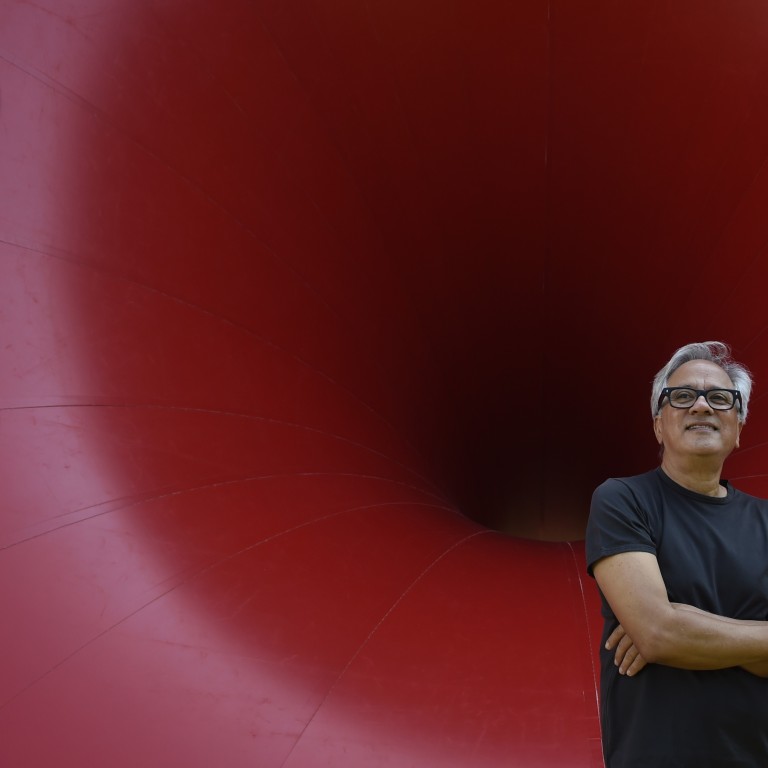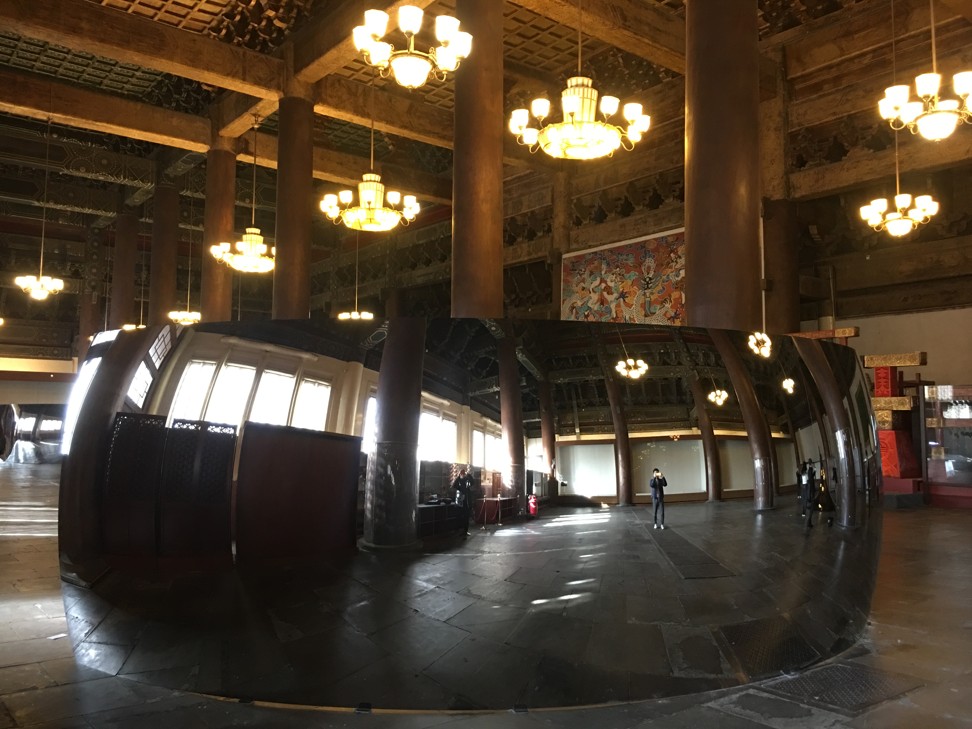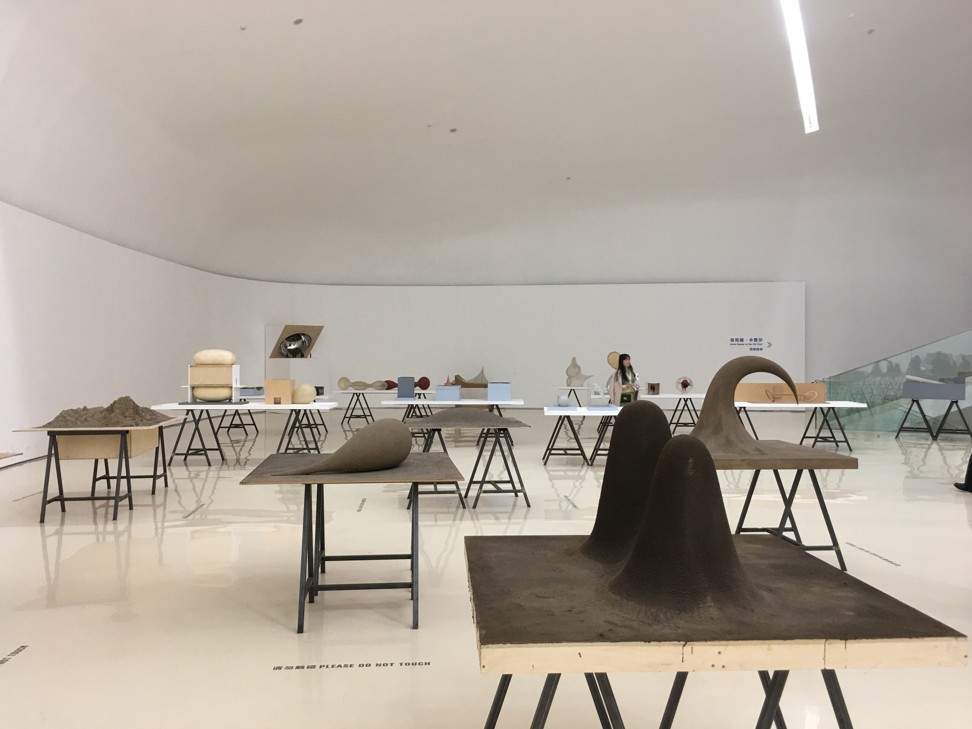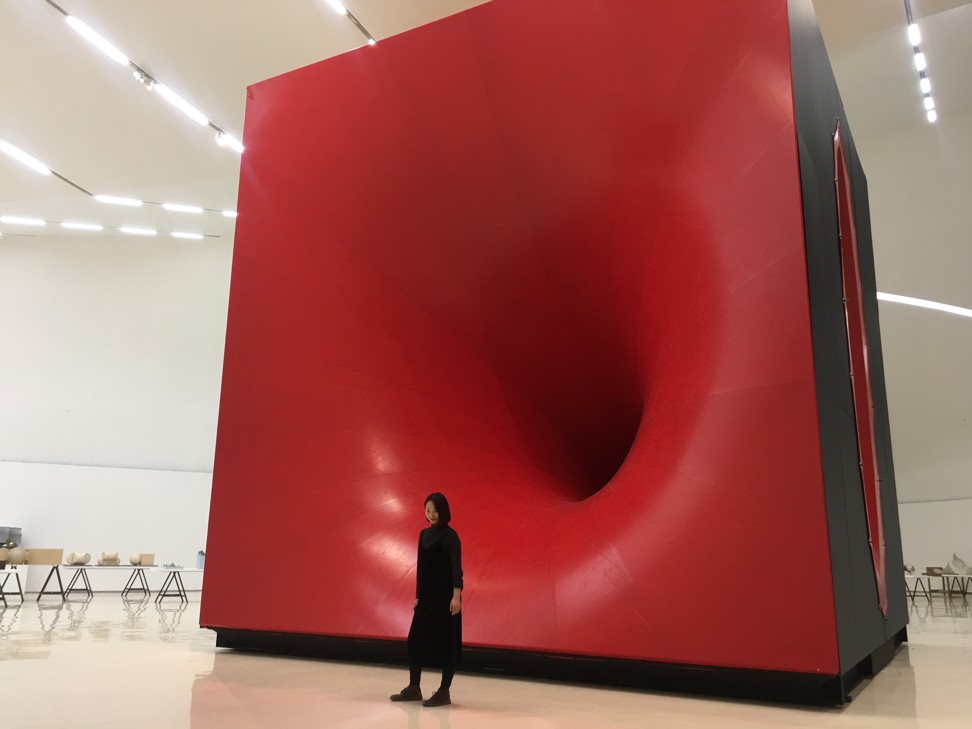
Artist Anish Kapoor plays with reality in his debut solo show in China, which brings his mirror sculptures indoors for the first time
- Concave and made of stainless steel, Kapoor artworks create warped impressions of a former imperial temple’s columns and beams, playing ‘a game with the viewer’
- Known for large public sculptures such as Cloud Gate in Chicago, the Indian-born British artist likes the fact that his art is open to multiple interpretations
British artist Anish Kapoor’s debut solo exhibition in China creates the illusion he has transformed a temple. Stainless steel works in the form of a concave mirror “turn the world upside down” at the Imperial Ancestral Temple, just outside the Forbidden City in Beijing, the artist says.
“[They] are hard to understand as objects, and kind of play a game with the viewer. The real project is this question about the status of the object, whether the object is a real thing or an illusory thing. We know that paintings are illusions of reality. A sculpture is supposed to be a real thing. But the question I am asking is ….is it a real thing? It is kind of in between.”
Kapoor, 65, says of the temple site: “It’s something that I understand has great weight. I hope … there will be other artists who follow me to show [their works] in these incredible buildings. They are really very powerful and are full of all kinds of psychic memory.”
More than a dozen of the Indian-born artist’s most significant works were unveiled this week in Beijing, at the temple and the Central Academy of Fine Arts Museum. The former houses some of his earlier works and the latter more recent ones.

At the temple, his works are installed in three buildings. “I tried to think about the temples as places of history, ancestors and memory,” he says.
Known for public sculptures that are considered by many as feats of engineering, his outdoor works often invite viewers to go on a visual and spatial adventure that is both stimulating and stretches conventions.

Visitors to the ancestral temple will have a similar experience as they stroll past works including Stave (2013), C-Curve (2007) and S-Curve (2006). The magisterial wooden beams, columns and roofs, and ancient copper bells lining the temple all look distorted in the reflections.
Kapoor says showing his mirror sculptures indoors at the ancestral temple strays from his usual practice.

“I have shown them outdoors many times. There’s the sky and light. This is a complete reversal of that … In this [new] situation, [the mirror works] are full of darkness because they are concave … even though one thinks of a mirror as reflecting the light … I really like [the darkness].
“[Like] the C-Curve, which sits on the ground. It’s like a Dutch painting [of a scene with people sitting around]. Dutch paintings of the 16th and 17th centuries are full of blackness. I like that,” the artist says.
Kapoor says he wants to bring physical sensations to Chinese audiences.


“The works are open enough to allow for multiple interpretations,” he says. “They don’t have some very direct narratives. They are not trying to tell you something. It’s [a presentation] of a situation, a group of objects, a colour, or no colour, or a reflection. So it’s these physical sensations that I feel are translatable into many [different] kinds of languages.”
Red – the most popular colour in China, representing good fortune, happiness and communism – runs through many of Kapoor’s works. It is the dominant colour in several of those shown in Beijing, including To Reflect an Intimate Part of the Red (1981), Dimensions Variable (2017), My Red Homeland (2003) and Sectional Body Preparing for Monadic Singularity (2015). Kapoor says the colour red has very deep significance in the Chinese context.
“The inner part of our bodies is red. So we all carry red with us,” says Kapoor. “Chinese red is slightly more orange red. It’s sort of fun … My instinct tells me that the Chinese red is triumphant. It is the colour that hits you. It’s not like blue which retreats …

“The red I have used most is darker than that. These subtle differences make big differences [in] the emotional meaning of a colour. … I’m interested in these little differences between different sorts of red and what their significance could be.”
“Anish Kapoor” runs at the Imperial Ancestral Temple until December 28, and at the Central Academy of Fine Arts Museum until January 1, 2020.

